Focus on Solar imaging!
Apollo series is the world’s first camera line designed specifically for solar photography, named after Apollo.
The Apollo series features Sony sensors with global shutters and a focus on monochrome sensors.

Now, we lanuch 4 models of Apollo cameras:
Apollo-M MAX (IMX432), 1.1 inch sensor, monochrome.
Apollo-M MINI (IMX429), 2/3 inch sensor, monochrome.
Apollo-M (IMX174) , 1/1.2 inch sensor, monochrome.
Apollo-C (IMX174) , 1/1.2 inch sensor, color.
* Notice: Solar camera requires energy rejection and light reducer, such like Baader film or Herschel wedge. Please DO NOT use it directly imaging the Sun.
Product Description
Apollo-M MINI is a solar camera developed by Player One Astronomy, which adopts the Sony IMX429 2/3” format monochrome sensor. The 4.5um pixel size accommodates a well depth of 24.8Ke with a total of 2.8MP (the resolution is 1944*1472), and the diagonal is 11mm.
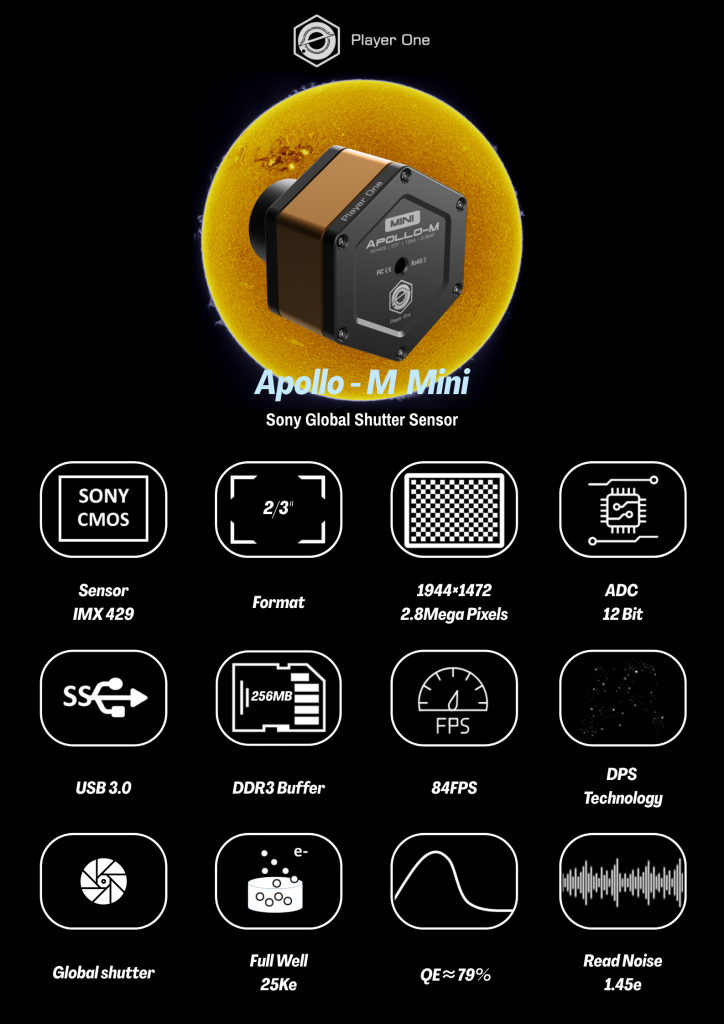
Pregius Technology
Apollo-M MINI (IMX429) is based on Pregius 3rd Generation. According to the introduction of technical documents, pixel size of 3rd Gen usually is 4.5um, and full well is 25Ke.
Format
Apollo-M MINI (IMX429) has 2/3″ format, this size is between IMX178 and IMX174.
Pixel size
4.5um pixel size is smaller than IMX174 camera, which means it can works provide higher resolution in same focal length.
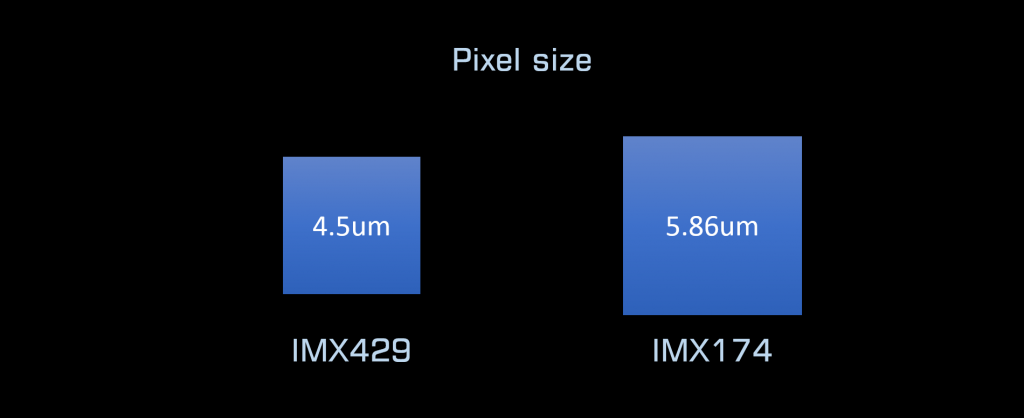
HCG mode
Apollo-M MINI has HCG mode, when Gain>71 HCG will open automatically.
Highlights
With global shutter, Apollo-M MINI are very suitable for sun and space station imaging. 4.5um pixel size and resolution 1944*1472, very easy to get high resolution images of the Sun.
Recommended accessories:
ACS (Active Cooling System)
ACS is a external air-cooled system, designed for solar and big format planetary cameras which already has PCS (Passive Cooling System). ACS can provide much better temperature control. When camera has PCS + ACS, temperature is only 7℃ higher than ambient, camera body is a little warm but won’t hot! ACS is not only can be used in daylight for solar imaging, it also could be used in night for DSO lucky imaging.
https://player-one-astronomy.com/product/active-cooling-system-acs-for-uncooled-cameras/
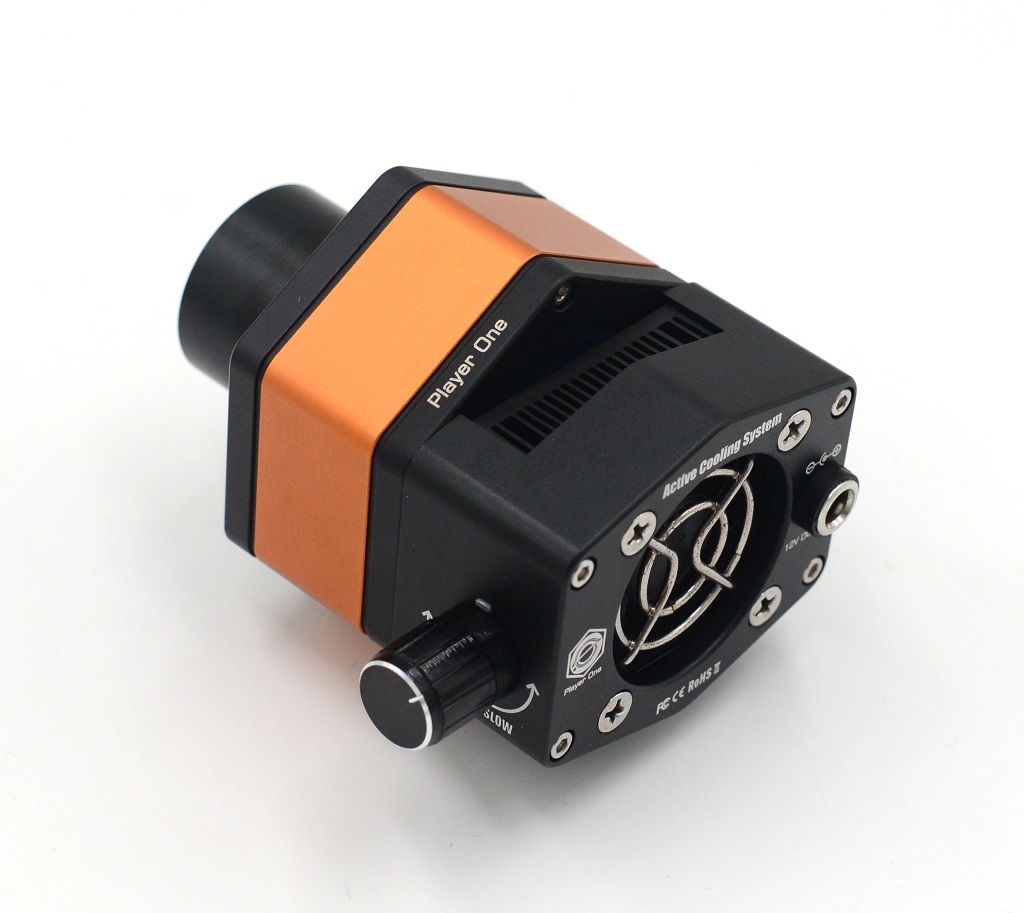
For better contrast, Player One Photosphere 10nm filter will be a good choice.
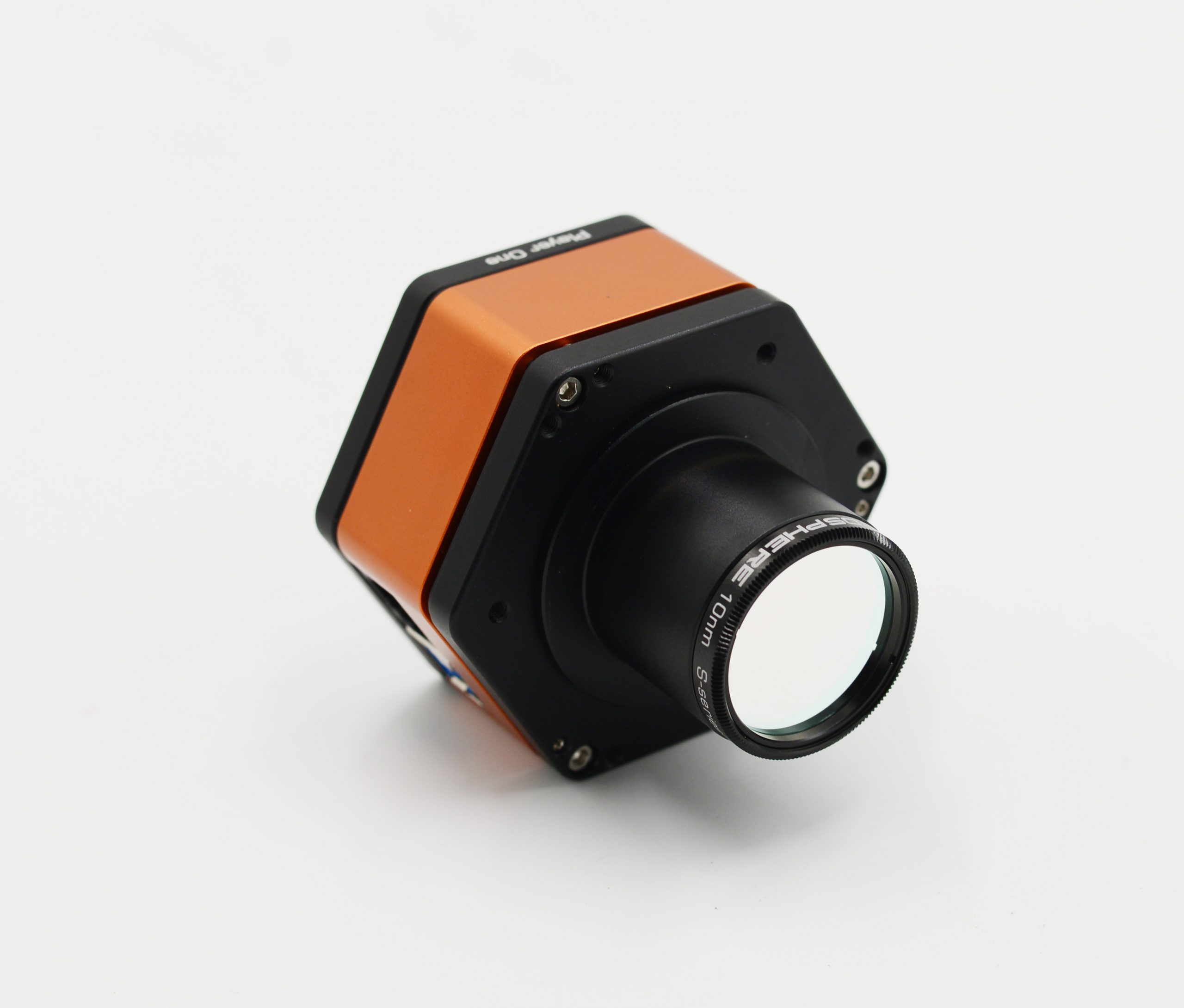
Photosphere in white light

introduce new 1.25″ ERF filter for Quark Chromosphere (Ha verstion) , intend to reject energy and extend life time of your Quark.
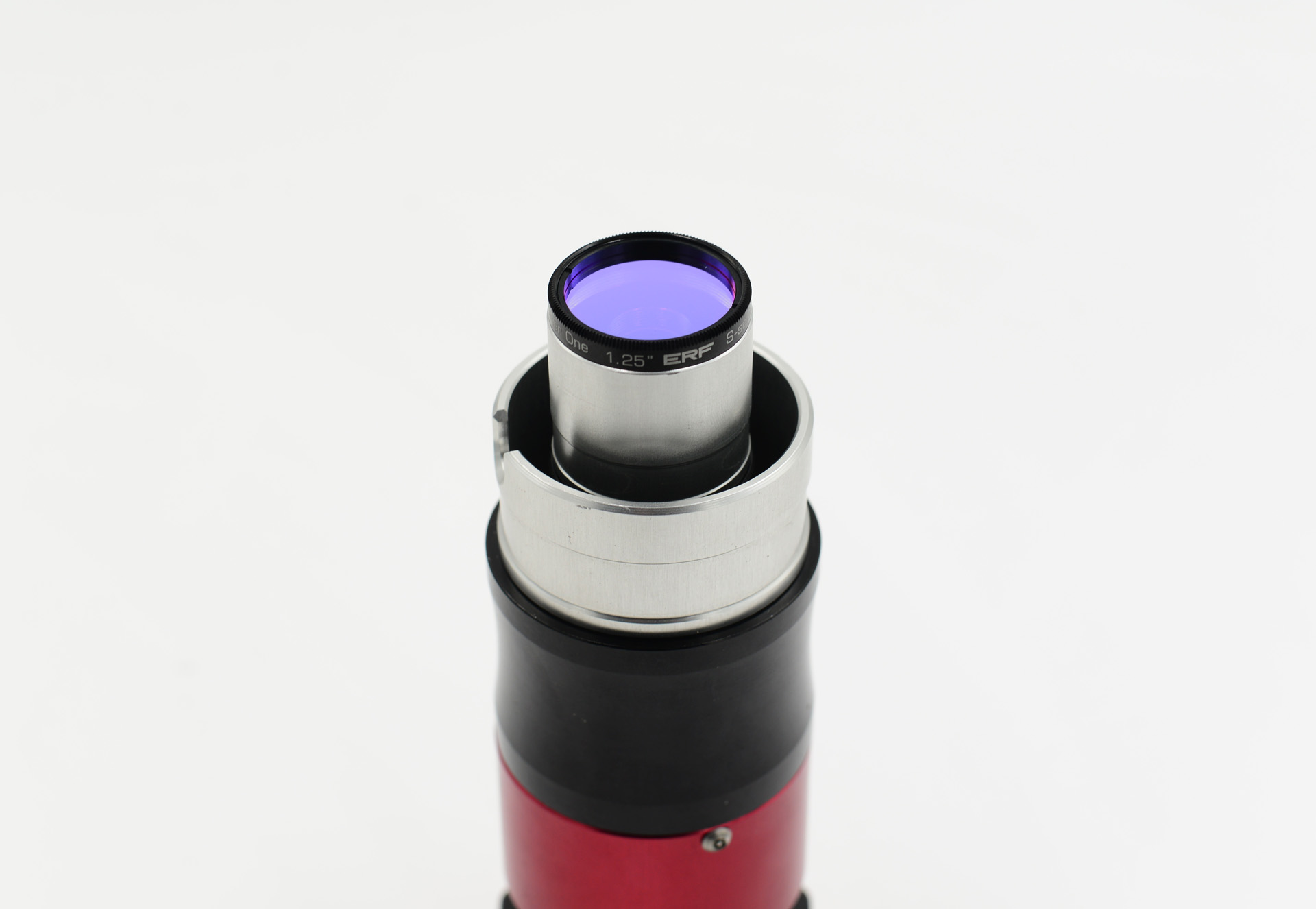
With Lunt or other solar telescopes, Apollo-M MINI also can provide very good performance @ f15-f20 focal ratio.
Reference setup:LXY80APO F6, Quark Chromosphere, Apollo-M MINI.

In 16bit RAW data, BIN2 mode can provide real 14bit data, it’s a big advantages in imaging and post-processing.
Features:
The naming of Player One Astronomy cameras is unique. Solar camera line, named after Apollo, the god of the sun. The suffix of the name describes the camera’s biggest feature.
Drivers and softwares download: http://player-one-astronomy.com/service/software/
Manuals download: http://player-one-astronomy.com/service/manuals/
Cutting-edge Design
The planetary cameras developed by Player One Astronomy uses a scientific and technological regular hexagon to construct the main body line, supplemented by round chamfers to achieve both rigidity and flexibility. The positive orange, which is imply solar, is matched with the low-key and steady black, and the super-fine frosting process on the entire surface makes the camera look luxurious and cool, highlighting the style of high-end players, can’t take my eyes off 😀
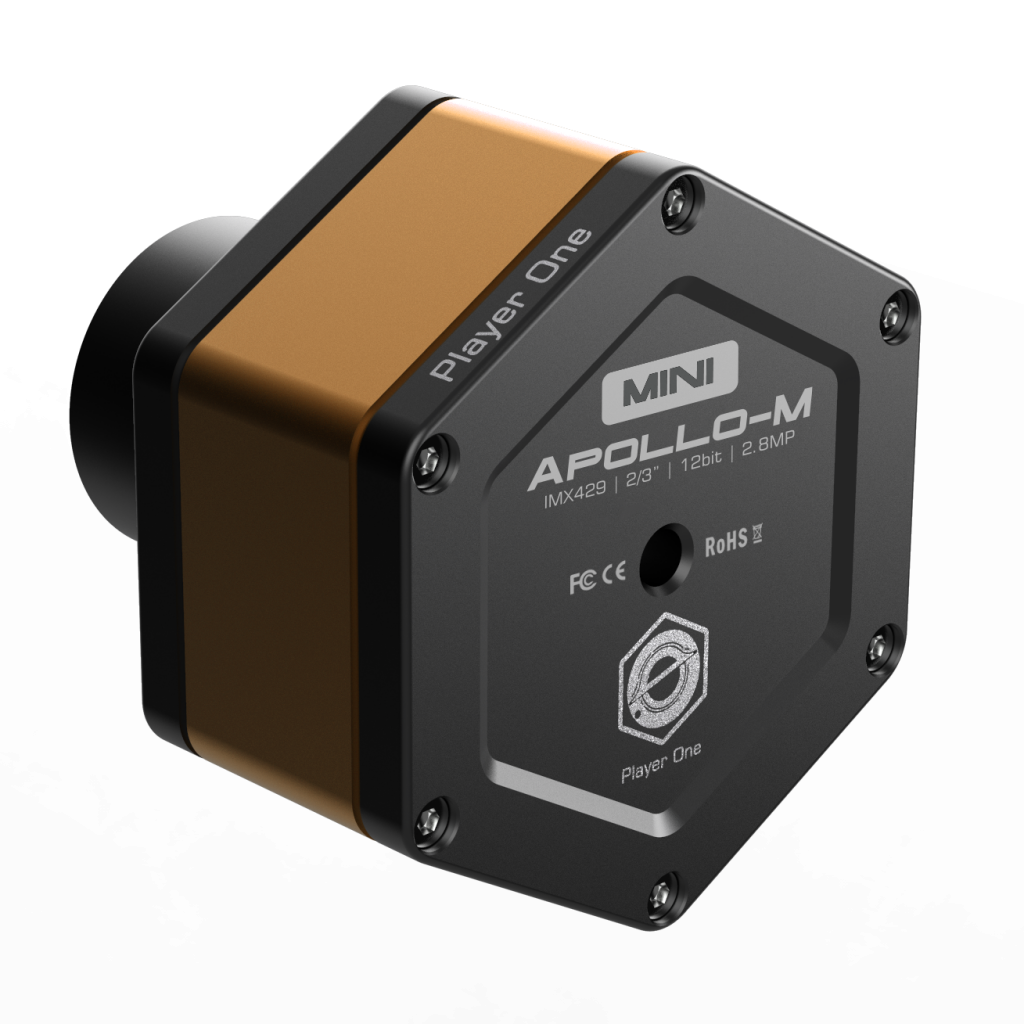
2nd Gen – Sensor Tilt Plate
When taking solar photograph with prominence telescope, the Newton ring is annoying. Smoother solar image without Newton ring could be taken by adjusting the focal plate. Get a much smaller field curvature of the telescope.
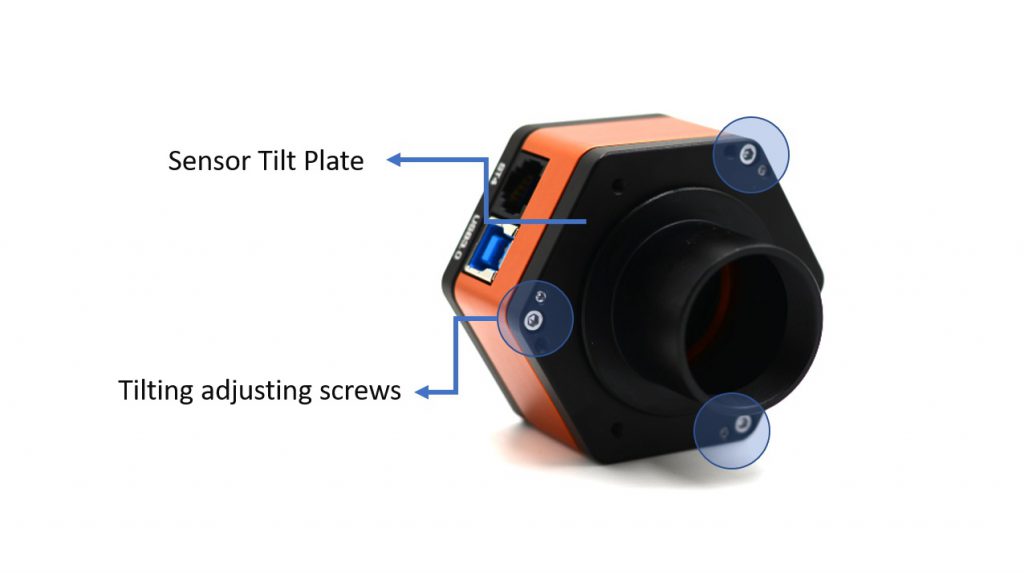
The built-in high-density sponge shading pad can block the light from the side slits without any side leakage.
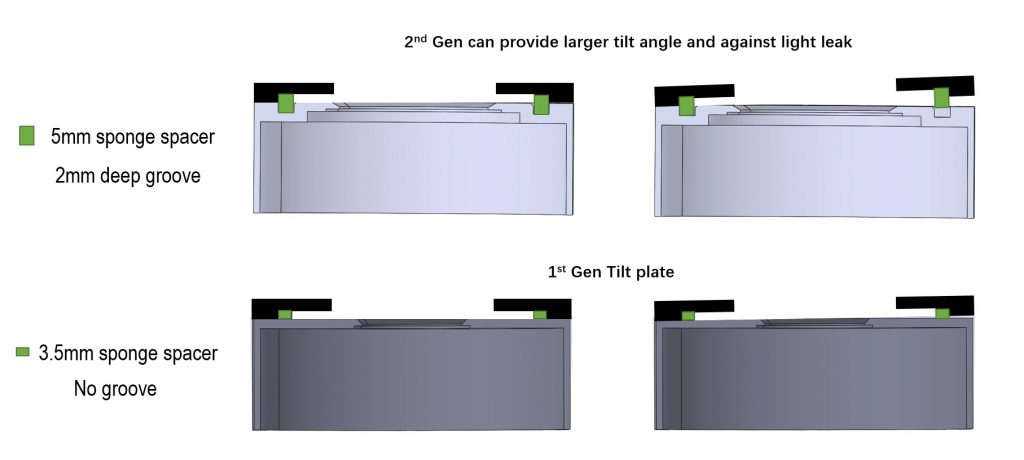

Passive Cooling System
Solar cameras working in daylight, temperature could be much higher than night. Heat of global shutter sensors will be a problem, especially some big format like IMX432. Player One add a new feature called Passive Cooling System to conduct the heat from the sensor out.
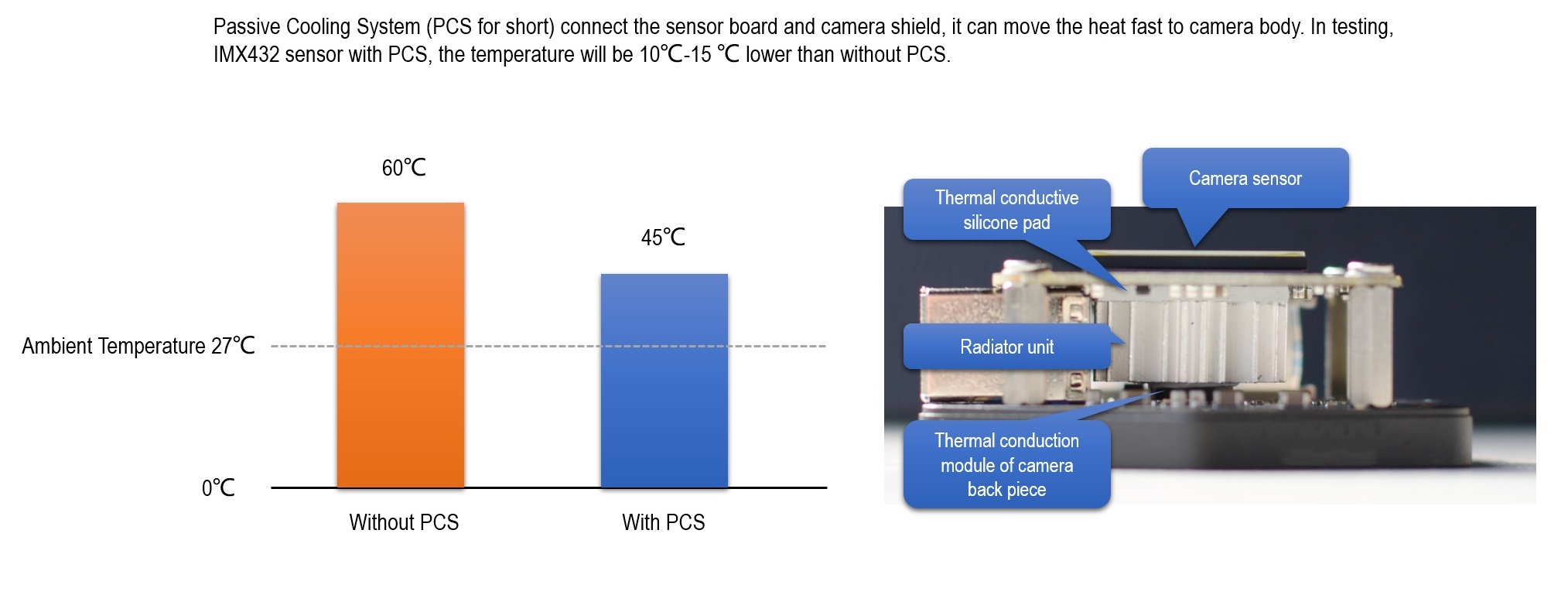
256M DDR3 Cache
Player One Astronomy cameras are the first one who adpots the DDR3 cache in all planetary cameras in the world! It helps stabilize and secure data transmission, it effectively avoids frame dropping and greatly reduces readnoise.
With the DDR3 cache, the camera does not have high demands on computing needs any longer, it will still has excellent performance even if it is connected to a USB 2.0 port.

DPS technology
The planetary cameras from Player One Astronomy have DPS (Dead Pixel Suppression) technology. The DPS is anaylse many dark frames to find out thoes fixed abnormal pixel and record the map in camera memory. In imaging, each exposure frames, thoes position of dead pixels will be given a median value according to the active pixels around that abnormal pixel.
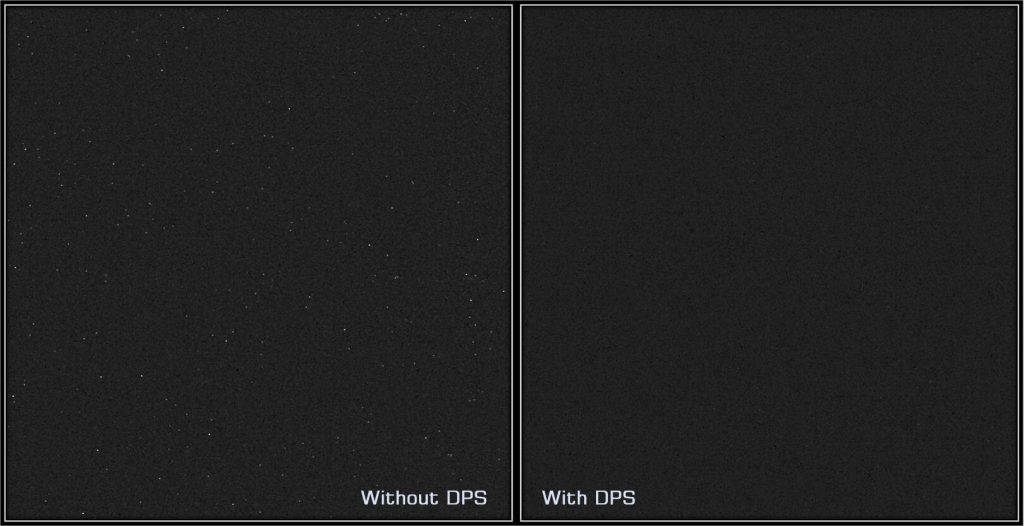
Overvoltage and overcurrent protection mechanism
Player One cameras produced by the number one player ensures the safety of your camera and other equipment through overvoltage and overcurrent protection mechanisms.
Data Port
When the camera is connected to the USB3.0 interface and full-resolution preview is used, it can reach 84 FPS in RAW8 mode (12bit ADC). When recording images, since the actual writing speed will be affected by the writing speed of the hard disk itself, when the hard disk writing speed is slow, the recording may not reach the theoretical speed. It is recommended that you use a high-quality solid state drive to record data to give full play to the performance of the camera.
Use the ST4 guide cable to connect the camera and the AUTO GUIDE port of the equatorial mount to do guiding.

Performance
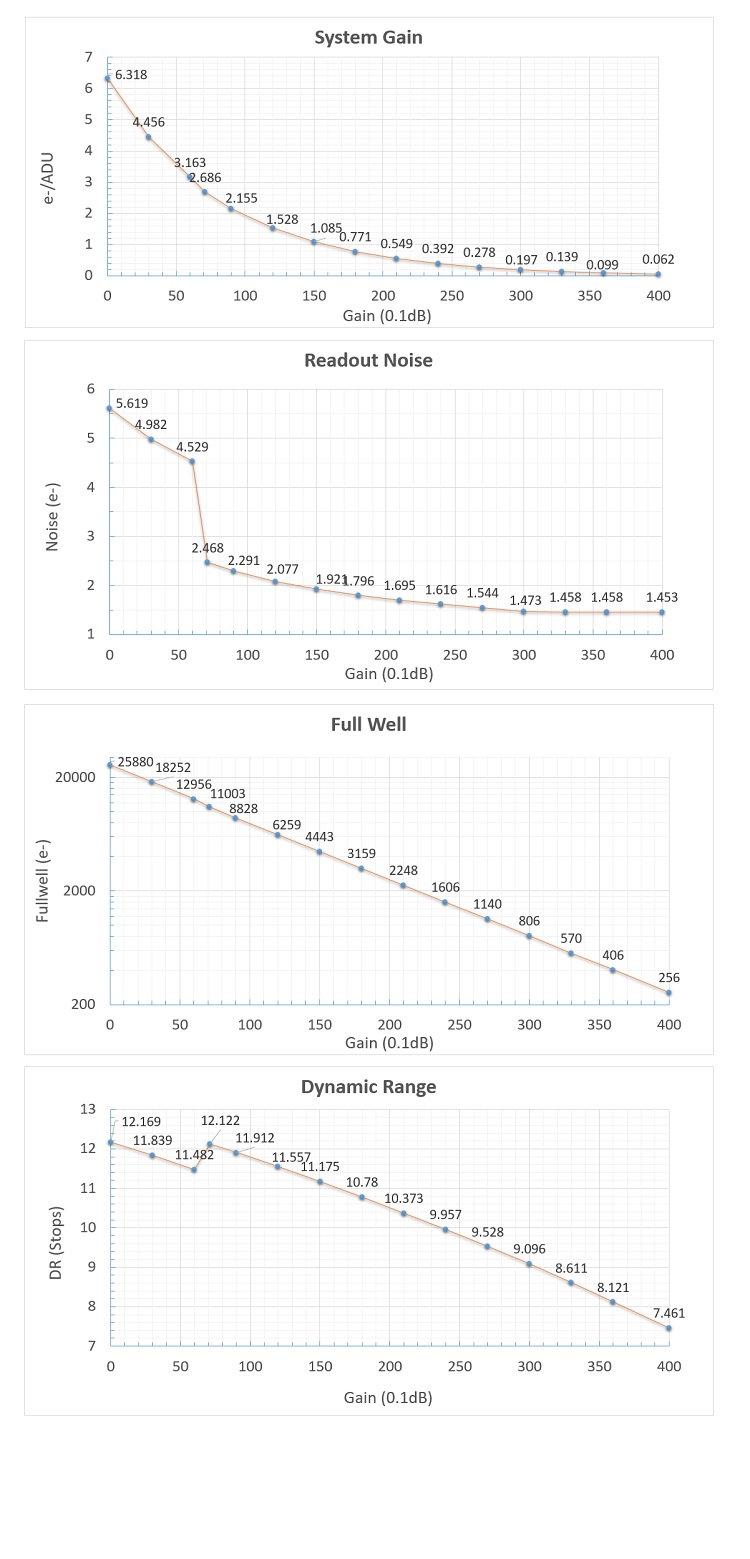
Readout Noise
Regarding readout noise, we solemnly promise that all values are obtained from actual tests. And for users, you could use Sharpcap 4 for testing. SC4 has a function called Sensor Analysis, provide a very simple way to test readout noise.
We wrote a tutorial on our website: https://player-one-astronomy.com/service/manuals/
After many rigorous readout noise tests, this camera can reach a low readout noise of 1.45e at a gain of 380.
If you are interested in readout noise testing, you may try it yourself, which is very simple.
QE Curve
Absolute Peak Value is about 79%.

HCG Mode
The Apollo-M MINI camera has a unique HCG mode. The HCG mode can greatly reduce the readout noise and retain the same high dynamic range as the low gain.
Mechanical Drawing
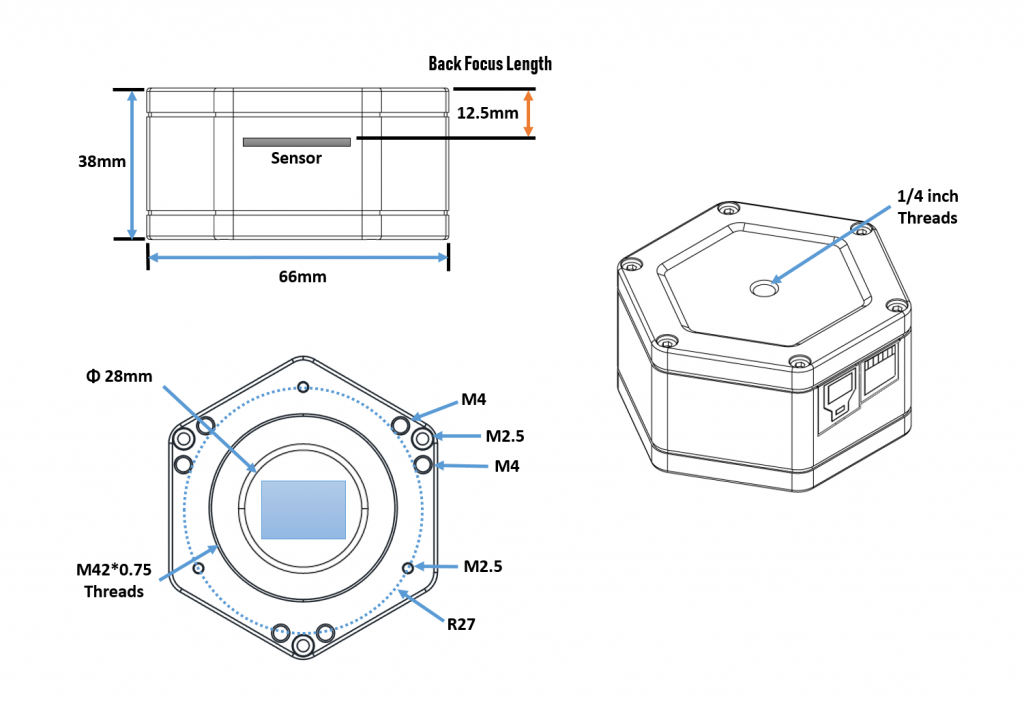
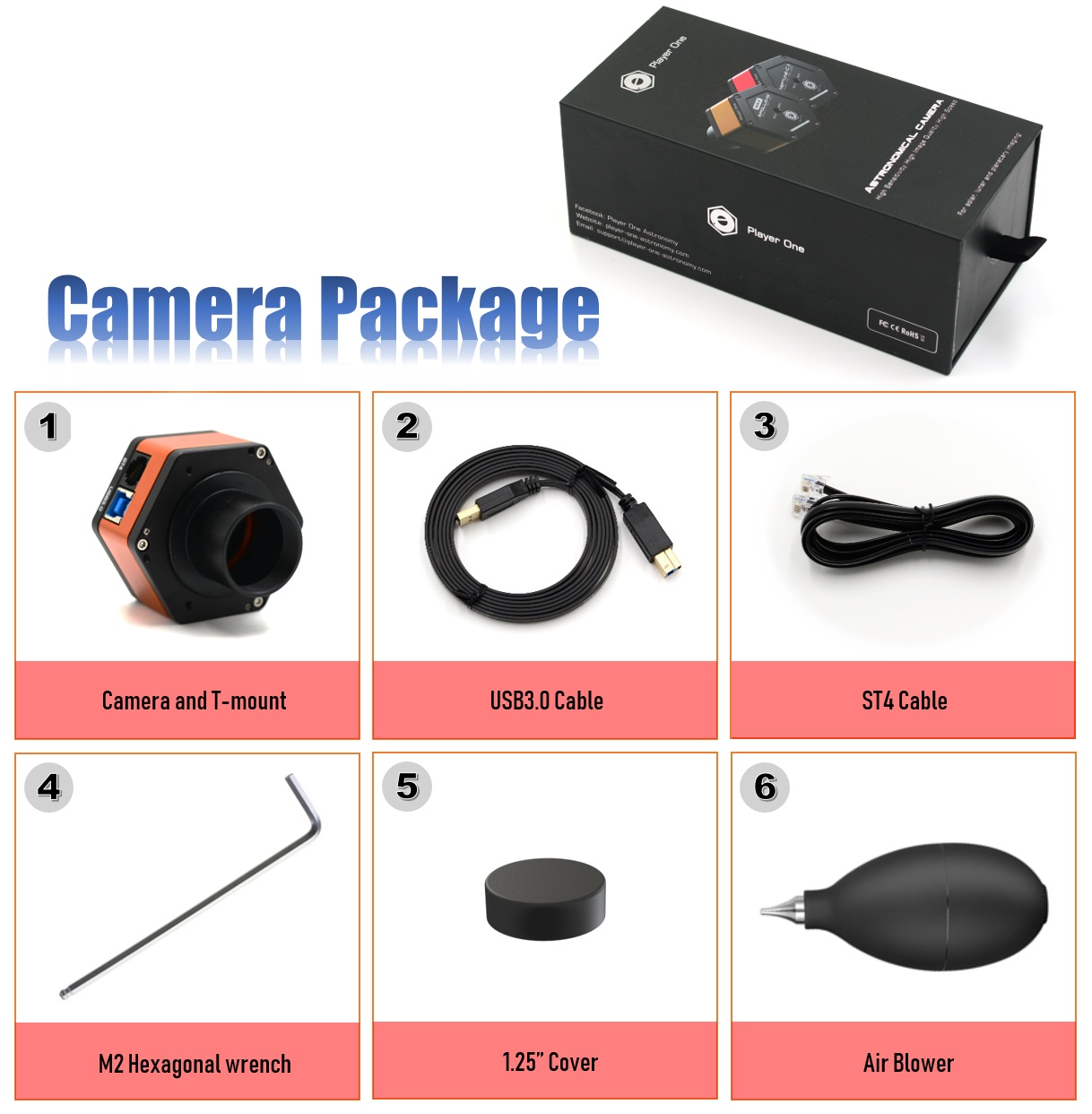
Users work:
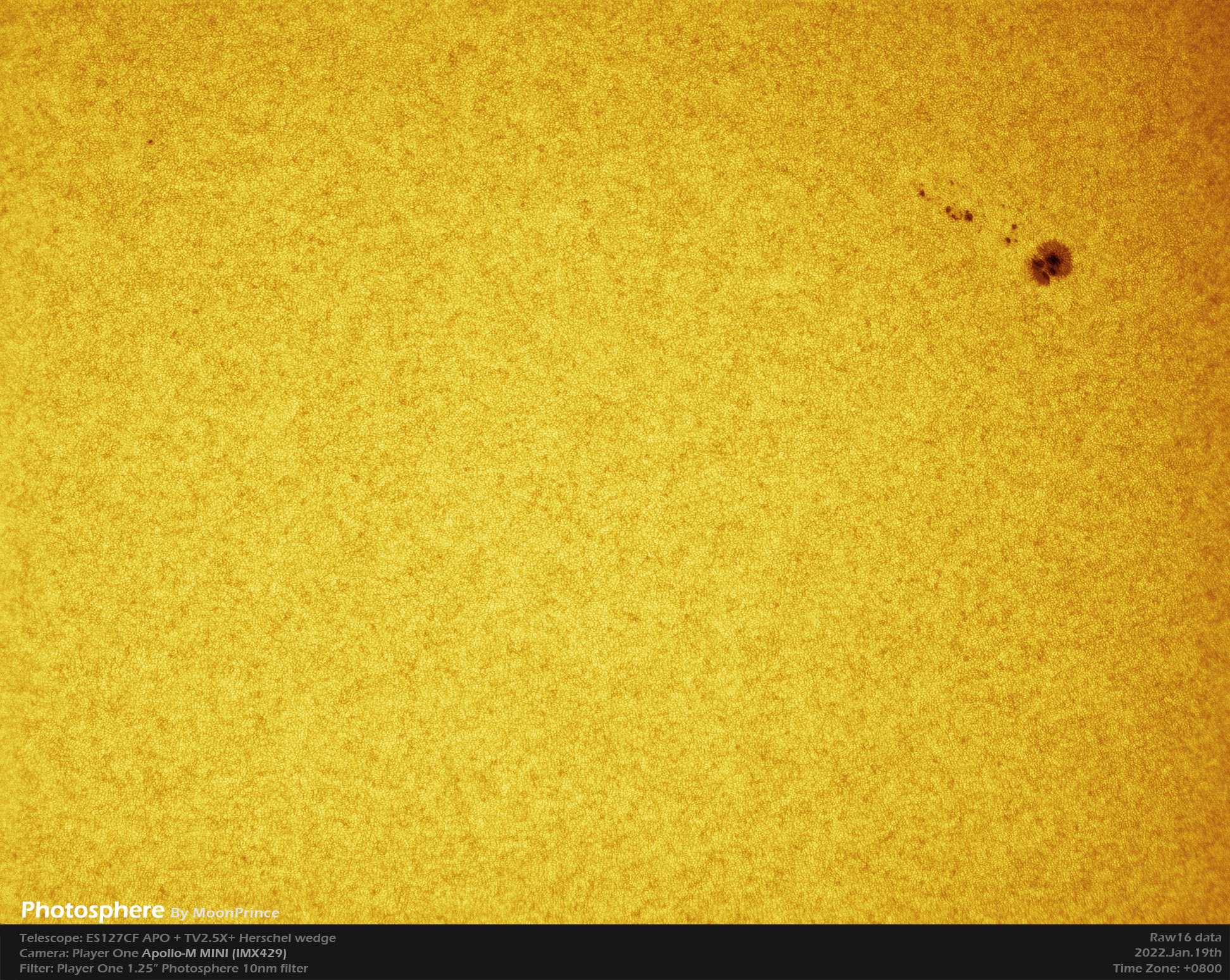
Chromosphere in H-Alpha
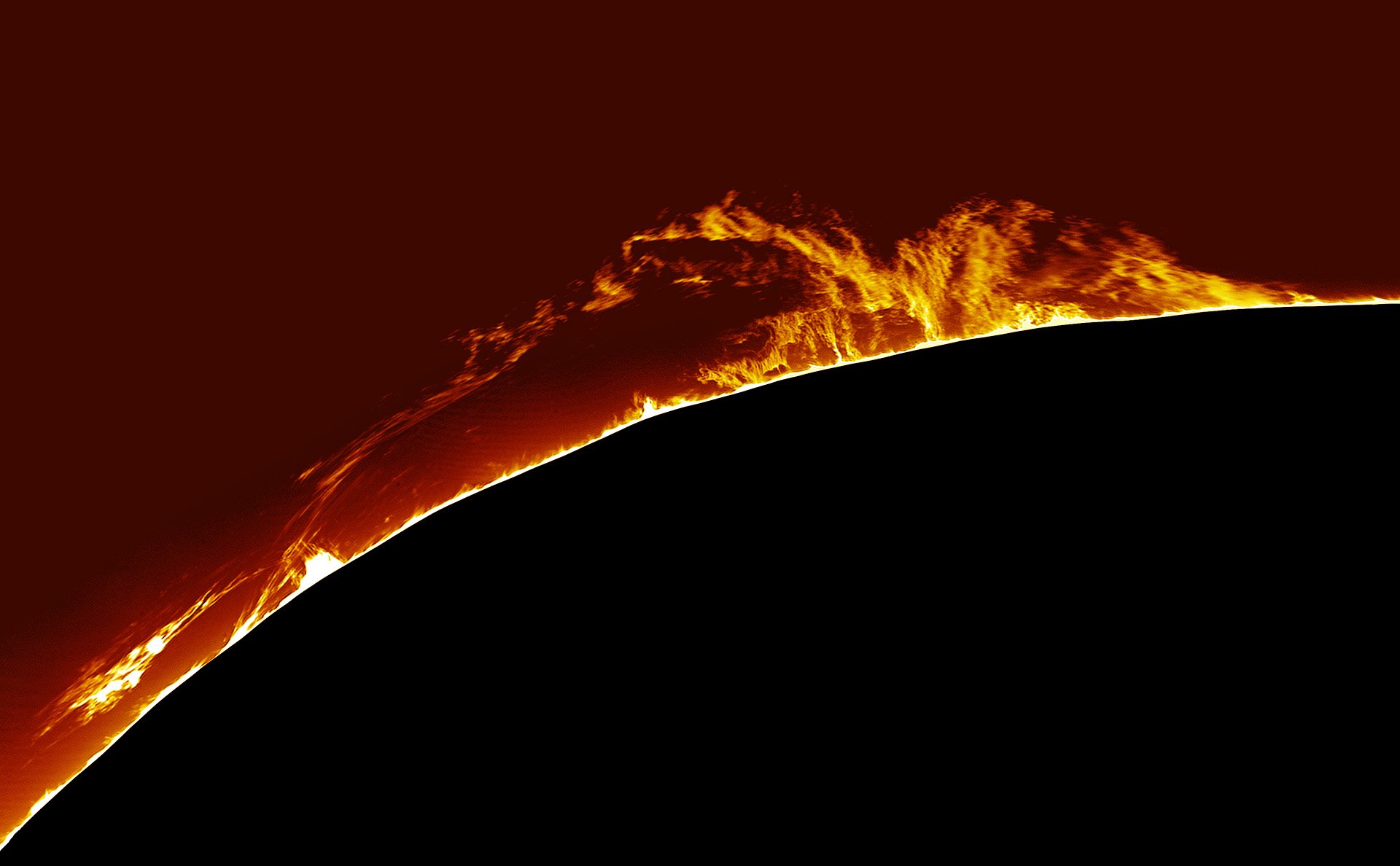
Akihiro Yamazaki : CFF200mm (F8), PowerMate 4x, Daystar ION (0.5A), Apollo-M MINI

Akihiro Yamazaki : CFF200mm (F8), PowerMate 4x, Player One Apollo-M MINI
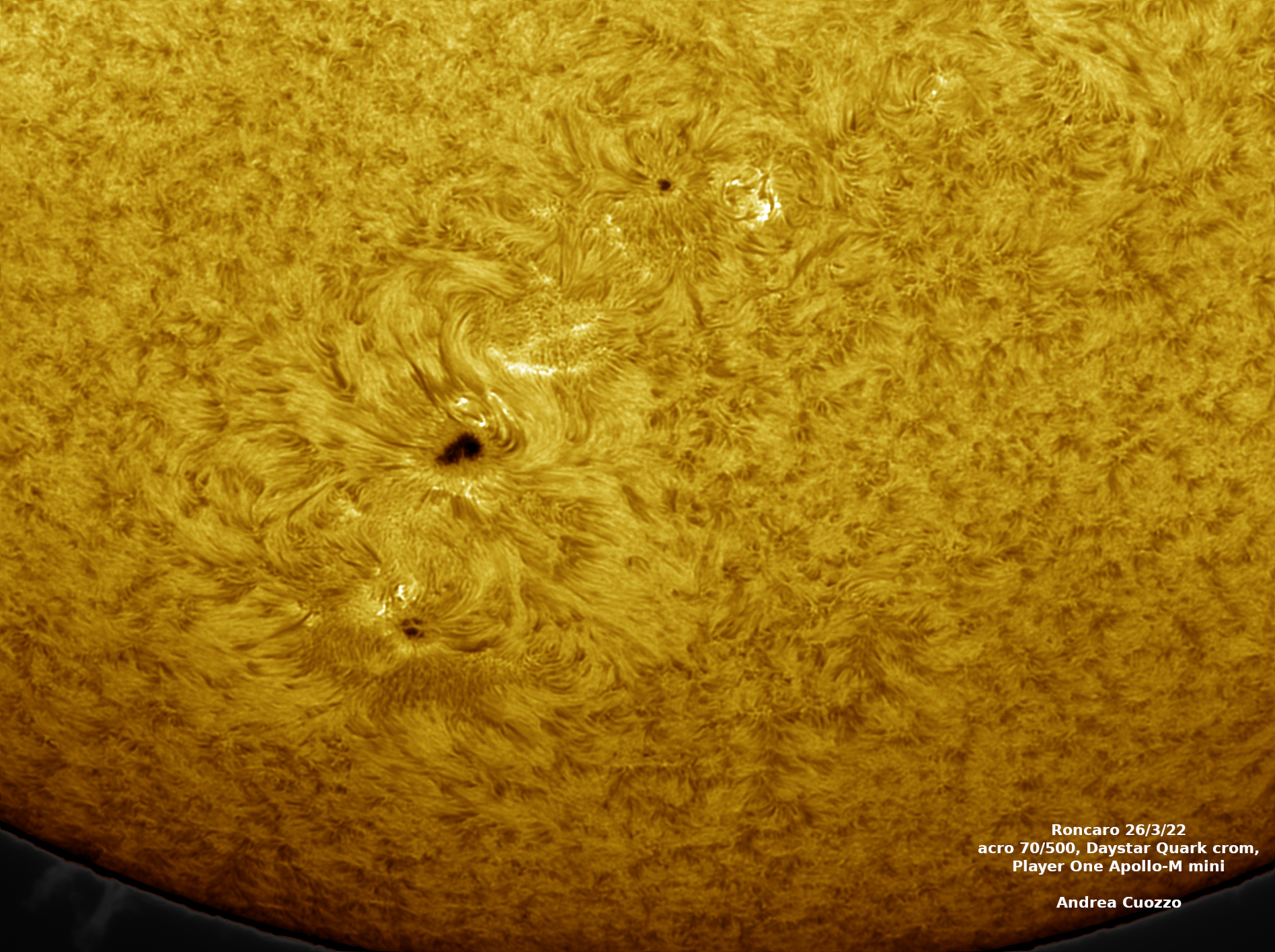
Andrea Cuozzo : acro 70/500, Daystar Quark, Apollo-M MINI
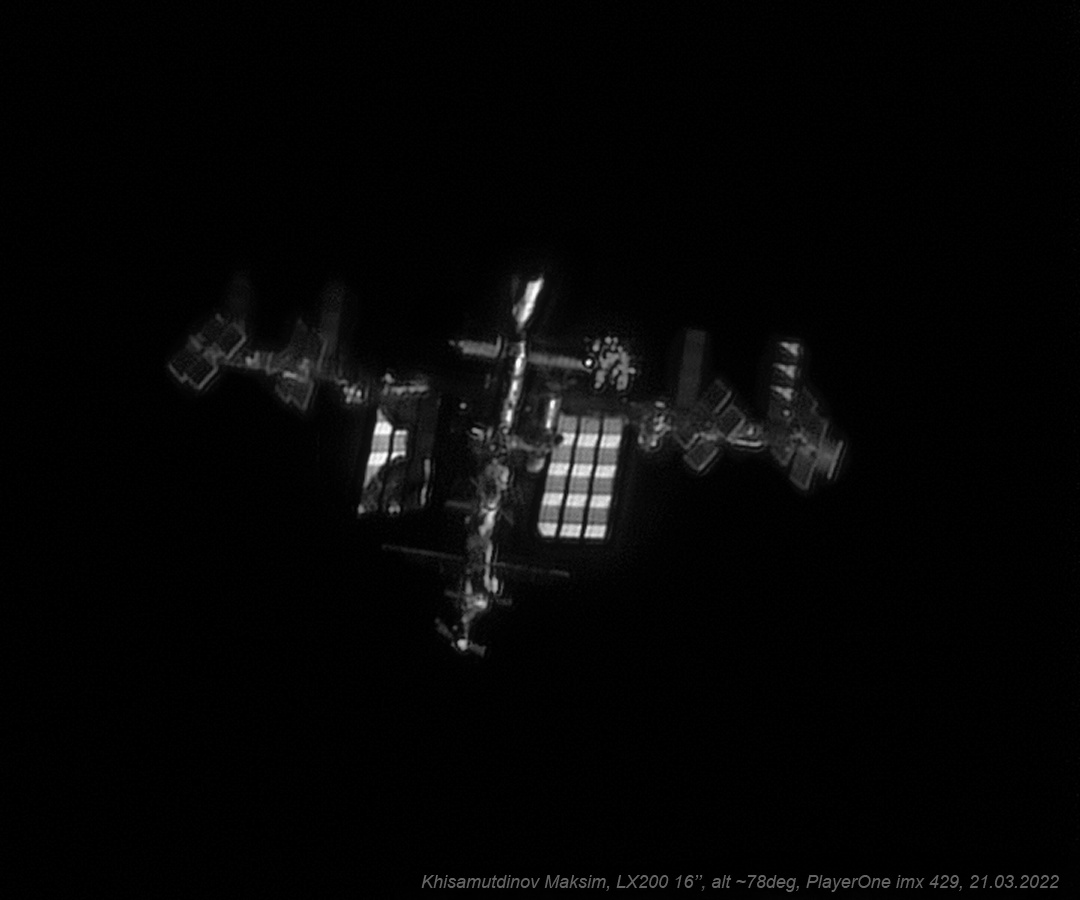
Khisamutdinov Maksim : LX200 16″, Apollo-M MINI.
-白底-small100-200x78.jpg)
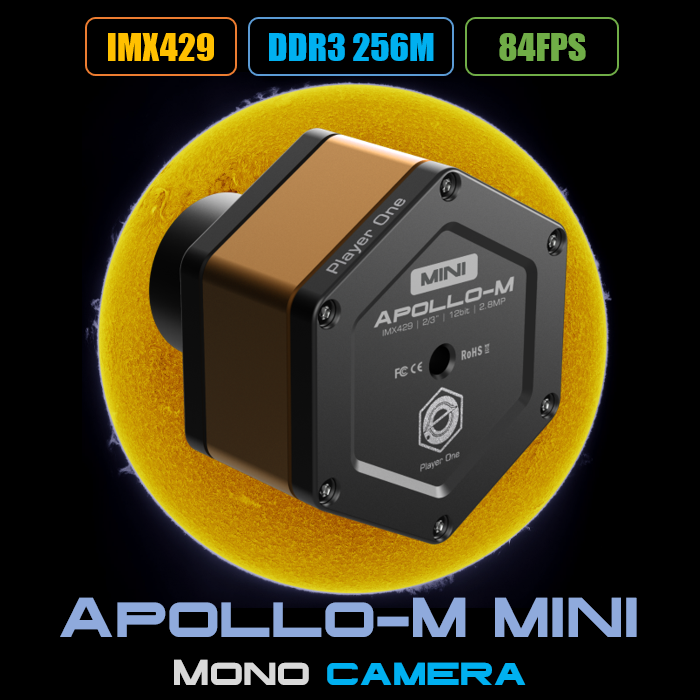
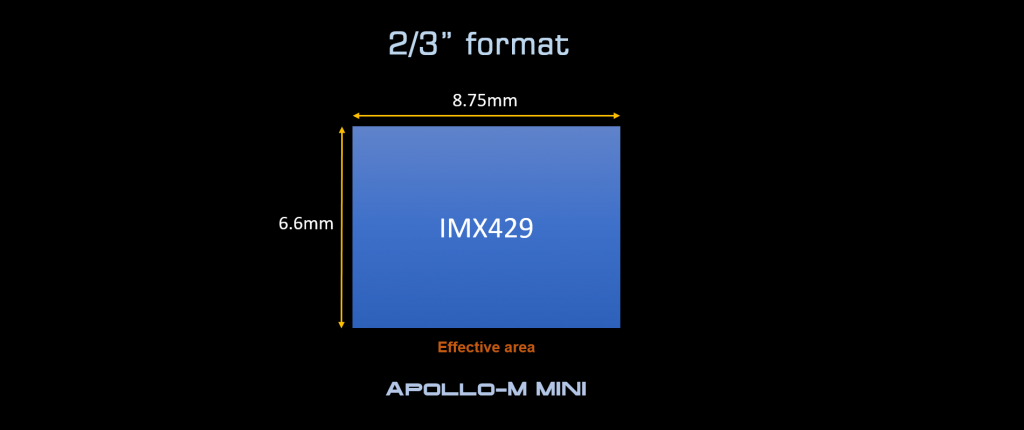




Adam Smith –
Since I got my Apollo MAX cam, I really think you are a great supplier in camera market. When I save more money, I will buy MINI for white light, do I need to buy a photosphere filter too?
Player One Astronomy –
We recommend to add photosphere filter for white light, it can give better contrast.
Robert M Cargill (verified owner) –
This is a great camera ( Apollo M Mini 429) for doing solar work, I’ll try it for lunar in the near future, easy to download the drivers and the necessary files to get the camera to run, ( windows 10 ) I use the latest version of SharpCap Pro, I use this camera with my Coronado 60mm MaxII solar scope with fantastic results, the 4.5um pixel size is just right for the FL of 400mm and use the Televue 2.5 PowerMate barlow lens, great results @ 1000mm FL, the FPS will vary by the resolution size, at times I can get up to 193 FPS or sometimes 25 FPS, The tilt plate is a nice added feature, the camera and cooler showed up as promised, no damage to either product, the box for the camera is a nice touch, looks great..Overall I give this camera 2 thumbs up!!!
Robert M Cargill (verified owner) –
As promised , I got the chance to use this Apollo M mini 429 twice on the moon, one using my C-8″ SCT and a friend let me use his C-9.25″ SCT also, needless to say this camera is for solar work, well it does a Great job on the moon too!!
This camera works well with the Televue 2.5x PowerMate barlow lens for lunar & solar work with the SCT’s and refractors
With the upcoming solar eclipse, this camera will be on my Coronado 60mm solar max II telescope for prime focus!!
I let my friend borrow this camera for his testing with his Televue refractor for the upcoming solar eclipse, he liked it so much, he bought one and likes the camera just as much as I do!!
Too bad I cant post the pictures here, would be a good selling point for future buyers!!
I still give this camera 2 thumbs up!!
Samuel Rodriguez (verified owner) –
I’ve been using the Apollo M Mini for over a year now for solar imaging, and it’s an absolutely fantastic camera! The build quality is exceptional, and its performance is truly impressive. Living in a desert climate with intense summer heat, I was concerned about overheating when the camera reached 57°C. After adding the cooler, it’s been a game-changer—keeping the camera a few degrees cooler than the ambient temperature and running flawlessly. As my first mono camera, I had no idea I was investing in the best. Player One’s quality and innovation are unmatched, making this a top-notch choice for any astrophotographer!
— @sams_cosmic_captures